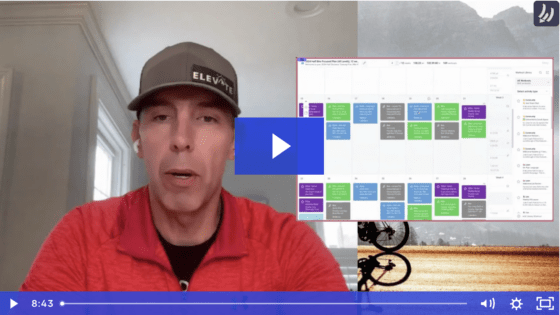We were thinking, it’d be a great idea to give you a taste of what’s coming up in our new eBook, Triathlon 2.0: Building a Proper Season. To whet your appetite, we’ll be putting out a chapter a week for the next few weeks, right here on the Endurance Nation Blog. Of course, there is much more to the actual book, and the only way to get it is to sign up for our email list using the form right under this paragraph. In the meantime, take a look and let us know what you think.
Manage Intensity, Not Volume
Let’s take a step back for a bit and recall that:
- Fitness is the ability to perform work.
- By progressively increase cumulative workload we force our body to adapt…
- And be able to perform more work…
- The functional expression of which is the ability to go FASTER and/or LONGER.
Let’s now talk about how we apply these concepts to a training week. Our job as coaches, and yours as a self-coached athlete, is to effectively manage your cumulative workload across your training week. You create this workload by manipulating three variables: 
-
Frequency — the number of swims, bikes, and runs you do each week. Frequency is flexible in the short term but inflexible in the long term. That is, most of us can go from two swims per week to three swims pretty easily. But scheduling four swims begins to bump up against real world constraints and commitments. The same is true, in our experience, with four vs three rides, or five vs three to four runs. Therefore, manipulating cumulative workload by manipulating frequency doesn’t give us enough range on the adjustment dial, so to speak.
-
Volume — the length, measured by time, of each training session. Volume is also flexible in the short term, inflexible in the long term. That is, we can dial up your Wednesday morning run from thirty minutes to thirty five to forty pretty easily. But you likely begin to bump up against life at some higher number. Likewise, a two to three hour bike ride every Saturday may be very repeatable for you, from a lifestyle and SAU perspective. But once you begin to dial it up over three hours, you likely experience greater and greater time costs.
-
Intensity — how easy or hard you go, within each individual training session. You can do any combination of easy, steady, hard, very hard intervals, of varying lengths, within any training session. Intensity then is the appropriate, primary variable for manipulating cummulative workload because it can be flexed in any manner, within the fixed variables of Frequency and Volume.
But many other training programs primarily manage volume, dialing it up week after week, to manipulate cumulative training load. What gives??
If volume is your primary tool, 10 hours per week becomes 12 becomes 15 becomes 18 becomes 20 becomes 25 becomes…divorced? Unemployed? Homeless? Where does this progression end? In our opinion, volume focused training methods – those that rely on volume as the primary tool – fundamentally neglect the fact that time, in your world, is a very valuable, costly, and fixed resource. It’s simply smarter,, and more appropriate for the age grouper, to operate inside a system within which:
- Frequency is relatively fixed.
- Volume is largely fixed for most of the season and then judiciously dialed up closer to your race.
- Intensity is infinitely flexible and the best, most appropriate tool with which to manage training stress.



Leave a Reply